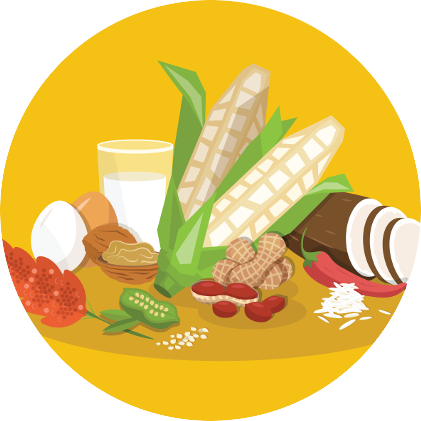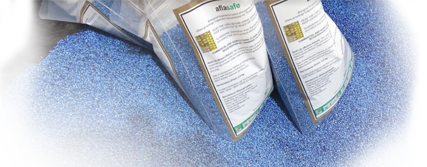 Aflatoxin is a highly toxic, cancer-causing poison that contaminates food. It builds up in our bodies and damages our health. As well as causing liver cancer, it makes us weaker against other diseases and stunts children’s growth. In some cases it can be fatal.
Aflatoxin is a highly toxic, cancer-causing poison that contaminates food. It builds up in our bodies and damages our health. As well as causing liver cancer, it makes us weaker against other diseases and stunts children’s growth. In some cases it can be fatal.
In large amounts aflatoxin can make us ill or kill straight away, but most of the time we eat it without noticing. It acts like a toxic fifth column, gradually infiltrating our bodies and building up within us. Like the most dangerous of secret agents, it can be present undercover for many years doing long-term harm, and is very difficult to detect.
 In Africa, aflatoxin is a big problem in maize and groundnuts, and it can affect other foods including cassava, sorghum, sesame, rice, chilli peppers and nuts. It makes animals like cows, pigs and chickens sick too, and they pass the toxin on into the milk, meat and eggs we enjoy.
In Africa, aflatoxin is a big problem in maize and groundnuts, and it can affect other foods including cassava, sorghum, sesame, rice, chilli peppers and nuts. It makes animals like cows, pigs and chickens sick too, and they pass the toxin on into the milk, meat and eggs we enjoy.
You cannot see, smell or taste aflatoxin, and it is damaging even in tiny amounts. Levels that are considered safe to eat are equivalent to no more than about one gramme of toxin – less than a spoonful – in 100,000 kilograms of food – enough to make dinner for a small city.
Shockingly, this poison is produced by a common fungus that is found almost everywhere in the soil (scientifically, the main culprit is known as Aspergillus flavus, though its close relatives are implicated too). Under the right conditions, this tiny organism infects crop plants while they are growing, and lives inside food all the way through harvest and storage until it is cooked and eaten.
Aflatoxin affects around a quarter of the world’s total food supply, and it is even more common in warm, tropical countries. It has a major economic – as well as health – impact, since many African harvests cannot be sold on international markets.
Q&As
For an introduction to Aflasafe and aflatoxin that answers your key questions, try our Q&As, currently available in English and French:










